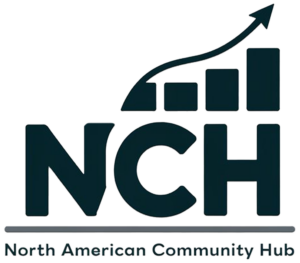Over 71 million young people worldwide face unemployment, with many struggling to secure stable work through traditional job markets.
Economic shifts, automation, and limited entry-level opportunities have left a generation searching for alternative ways to earn.
Digital platforms have emerged as powerful tools, allowing young individuals to find work, build valuable skills, and generate income in innovative ways.
Access to these opportunities, however, is not evenly distributed. Some face technological barriers, while others lack the resources to participate fully.
A growing digital economy is reshaping how young people approach careers, making it essential to examine how these platforms create new earning pathways and the challenges that accompany them.
Key Earning Avenues Enabled by Digital Platforms

Young people today have more digital income opportunities than any previous generation.
Multiple online platforms provide pathways to work, skills, and financial independence.
While some options require advanced expertise, others focus on creativity, networking, or entrepreneurial thinking.
The following areas highlight the most prominent earning avenues available.
Job Searching and Career Networking
Digital networking platforms have transformed how job seekers connect with potential employers.
LinkedIn is a leading space for professional visibility, enabling youth to showcase their skills, share achievements, and engage with industry leaders.
The site’s job-matching features help align candidates with relevant positions, reducing the time and effort spent searching.
Programs like the Harambee Youth Employment Accelerator also offer training, resume building, and interview preparation.
Key benefits include:
- Professional exposure: Showcasing work history, skills, and recommendations to a global audience.
- Targeted job matches: Algorithms connecting users to relevant openings.
- Skill development opportunities: Access to training programs and certifications.
- Networking potential: Building relationships with industry professionals.
A polished LinkedIn profile, paired with active participation in professional groups and discussions, significantly improves a young job seeker’s visibility.
In many cases, career opportunities arise through online interactions before a formal application process even begins.
Gig and Freelance Work
Freelance marketplaces such as Upwork, Fiverr, and oDesk have opened doors for individuals offering skills in design, writing, coding, digital marketing, and more.
Unlike traditional employment, these platforms allow workers to choose projects, set rates, and work with clients around the world.
Many freelancers use these jobs to supplement income, while others build full-time careers.
Advantages of gig and freelance work include:
- Flexibility: Choosing projects and working hours based on personal schedules.
- Global client base: Opportunities to work with individuals and businesses worldwide.
- Skill expansion: Exposure to varied projects that enhance professional capabilities.
- Scalable earnings: Potential to increase rates as experience and reputation grow.
Success in freelancing often depends on clear communication, consistent delivery, and positive client feedback.
For those interested in more unconventional or entertainment-driven digital income streams, fast-payout online casinos are also a growing niche that leverages instant transaction technology and offers opportunities for skilled gamers and content creators to earn through sponsored play, affiliate marketing, or casino streaming.
If you’re interested in checking these out, visit https://casinosanalyzer.com/online-casinos/fast-payout
Content Creation and the Influencer Economy
Social media has become a legitimate income source for many young people.
Platforms such as YouTube, TikTok, and Instagram offer monetization options through advertising, brand partnerships, and product sales.
Many creators start with little to no earnings, investing substantial time to develop an audience and a consistent content style.
Known as aspirational labor, this early phase requires patience and persistence before financial rewards appear.
Monetization avenues for content creators include:
- Ad revenue: Earnings generated from platform-osted advertisements.
- Brand sponsorships: Paid partnerships promoting products or services.
- Merchandise sales: Selling branded items to dedicated audiences.
- Crowdfunding support: Platforms like Patreon allow fans to contribute directly.
Strategic use of trending topics, collaboration with other creators, and regular audience engagement often separate successful influencers from those who remain unnoticed.
Access to Grants and Social Entrepreneurship
View this post on Instagram
Digital tools have made it easier for young entrepreneurs to secure funding for social and business initiatives.
Websites like FundsforNGOs connect innovators with potential donors and grant opportunities.
Crowdfunding platforms also provide ways to raise capital directly from supporters worldwide.
Steps involved in securing funding include:
- Project presentation: Crafting a clear, compelling proposal.
- Platform selection: Choosing the right website for the type of initiative.
- Promotion: Using social media to increase visibility.
- Networking: Building relationships with donors and supporters.
Young people leveraging these resources can move projects forward without traditional financial backing.
Such platforms also encourage collaboration across borders, expanding the reach and impact of social initiatives.
Skill Development and Capital Accumulation
Gaining income is only part of the value digital platforms provide.
Many young participants acquire valuable knowledge, connections, and credibility that can benefit them long after specific projects end.
Economic, Social, and Cultural Capital

Active participation in digital work allows youth to strengthen several forms of capital:
- Economic capital: Direct income and financial stability.
- Social capital: Building meaningful connections with peers, mentors, and industry leaders.
- Cultural capital: Developing marketable skills, industry insight, and public recognition.
Over time, these assets can make young professionals more competitive in both digital and traditional labor markets.
Informal Learning and Online Experience
Practical skills gained through online work often match or exceed those taught in formal settings.
Involvement in projects builds competencies in communication, time management, and problem-solving.
Access to resume workshops, branding webinars, and online training tools provides further growth opportunities.
Skill benefits often include:
- Technical proficiency: Mastery of collaborative platforms, design tools, and project management software.
- Portfolio development: Documenting work for future opportunities.
- Soft skills enhancement: Strengthening interpersonal communication and adaptability.
Informal learning through these experiences ensures that youth remain adaptable in fast-changing work environments.
Challenges and Barriers

Not all young people can participate equally in digital income opportunities, and some face structural disadvantages.
Digital Inequality
Reliable internet access and devices are essential but not universally available.
Many rural or low-income areas suffer from poor connectivity or high costs that make consistent online work unrealistic.
Main barriers include:
- High data costs: Particularly challenging in countries like South Africa.
- Infrastructure gaps: Weak networks and limited coverage.
- Device accessibility: Lack of affordable computers or smartphones.
Without addressing these issues, large segments of the youth population will remain excluded.
Platform Bias and Limitations

Algorithmic preferences can skew opportunities toward certain demographics or industries, often sidelining blue-collar or informal work.
Key issues involve:
- Demographic bias: Favoring applicants from specific regions or backgrounds.
- Sector concentration: Limited exposure for less digitally prominent job categories.
- Transparency concerns: Lack of clarity in how opportunities are filtered.
Fairer algorithm designs and inclusive hiring features could help correct these imbalances.
Exploitation and Data Extraction
Many platforms profit significantly from user-generated content and personal data without guaranteeing fair compensation.
Young people contribute to engagement metrics and advertising value, often without realizing the scale of monetization.
Concerns include:
- Unpaid contributions: Content creation without direct financial return.
- Data monetization: Selling or using personal data for targeted advertising.
- Revenue inequality: Disproportionate earnings between platforms and creators.
Solutions could involve revenue-sharing policies and stronger data privacy protections.
The Bottom Line

Digital platforms have reshaped earning possibilities for young people, offering multiple pathways to income, skill growth, and professional visibility.
Despite the opportunities, barriers such as unequal access, algorithmic bias, and exploitative practices remain significant.
Building a fairer system requires cooperation between governments, platforms, and communities to ensure that all young people can benefit from the evolving digital work environment.


